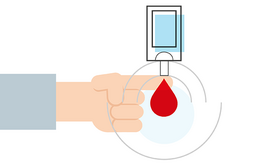
In 2017, the industry shook with excitement at the news that the first CAR-T therapy, Kymriah, was approved for use by the FDA. The industry’s elation didn’t quieten quickly, as the approval of Yescarta came hot on its tails. But with time and room to think about the next step of the industry’s immunotherapy journey, many are beginning to consider how we can fine-tune treatments to better target solid tumors.
The recent clinical success seen in the CAR-T therapy space exemplifies the leaps in progress being made in the field, but such success has only been seen in a small number of tumor types. The selectivity of CAR-Ts for both tumor and normal cells also raises questions about whether they can (or will) adequately address cancer types beyond hematological malignancies, where tumor penetration is required.
Like criminals, different types of cancer have different levels of sophistication. The low level criminal is easy to target and tackle, but the organized criminal can hide in plain sight and evade all attempts to stop them. The same can be said of law enforcement personnel. For the inexperienced officer of the law, catching certain offenders will be easier than others. Similarly, CAR-Ts are best suited to targeting cells in suspension rather than solid tumors, which are known for their hostility. Their inability to penetrate cells means we can’t get significant results in using CAR-Ts against solid tumor types. Certainly, research is improving the functionality of CAR-Ts, but there is still much to be done before they can be used to combat a wide range of cancers.
But CAR-Ts aren’t going anywhere soon – from industry to academia, people are vested in developing CAR-T based therapies to address a broader range of needs. Dual CAR-Ts and armored CAR-Ts are only some of the latest offerings coming out of the oncology space. But TCRs (t-cell receptors), unlike CAR-Ts, can recognize tumor-specific proteins within cells and are also able to target a wider range of antigens than their counterparts. Their potency is reliant on their interaction with peptide-major histocompatibility complexes (p-MHCs) and a great deal of promise has been shown when TCRs form interactions with MHC class II, as they are not only able to target cancer cells, but change the tumor environment through their interactions with other cells.
These therapies are beginning to shape expectations of how immunotherapies should work. CAR-Ts s have been shown to affect remission rates by 90 percent in hematological malignancies and the industry is beginning to wonder if similar levels of efficacy will be seen in solid tumors – preclinical and clinical testing will provide the answer. If we are able to achieve significantly higher success rates with TCRs than with current alternatives, I think we will be able to help patients achieve a better quality of life.
Adaptimmune, a clinical-stage biopharmaceutical company, is an example of the headway being made in the TCR space. Their lead candidate, ADP-A2M4, is currently in a phase II, open label, dose escalating study to examine the effect of the drug in synovial sarcomas. The compelling data so far lead me to believe that we will see the first TCRs come to market within the next two to three years.
But a lingering challenge for TCRs is their binding affinity to tumor antigens. Though companies have, for some time now, moved toward the development of affinity-enhanced TCRs, issues pertaining to cross-reactivity and self-reactivity are still likely to rear their heads, resulting in adverse events.
Zelluna, like someother companies in the immunotherapy space, are now taking TCRs from humans after immunization to help improve safety profiles. Because the TCRs are selected in vivo, the opportunity for cross-reactivity is low. But I suspect that the current issues with affinity and antigen targeting will be ironed out within the next five years as the field matures and interest grows.
Beyond these challenges, the coming years are bursting with potential. The industry is turning its head toward the use of multiple TCRs in cells and exploring the effect of phenotype on cancer cells. If companies are able to deliver benefit to patients by exploring these avenues, the treatment of solid tumors will be revolutionized. Until then, we must all focus our efforts on developing more advanced TCRs so that we can realize similar (if not better) levels of success than have been achieved with CARs.
Miguel Forte is Chief Executive Officer, Zelluna Immunotherapy and Chief Commercialization Officer and Chair of Commercialization Committee, International Society for Cell and Gene Therapy (ISCT).


















